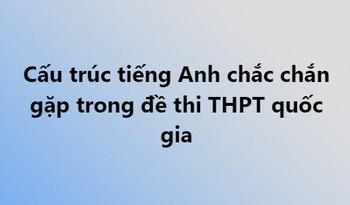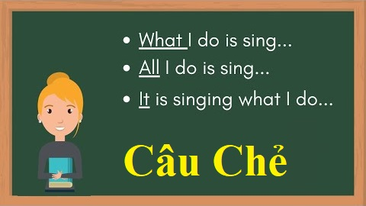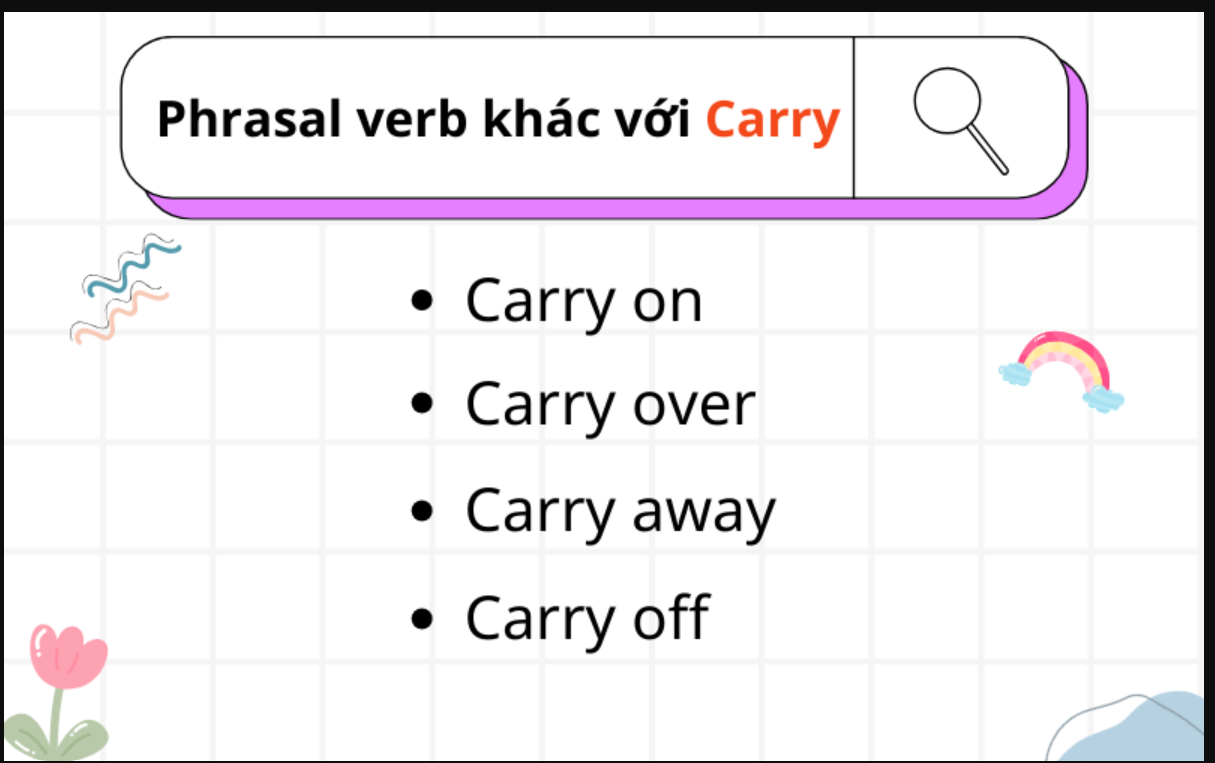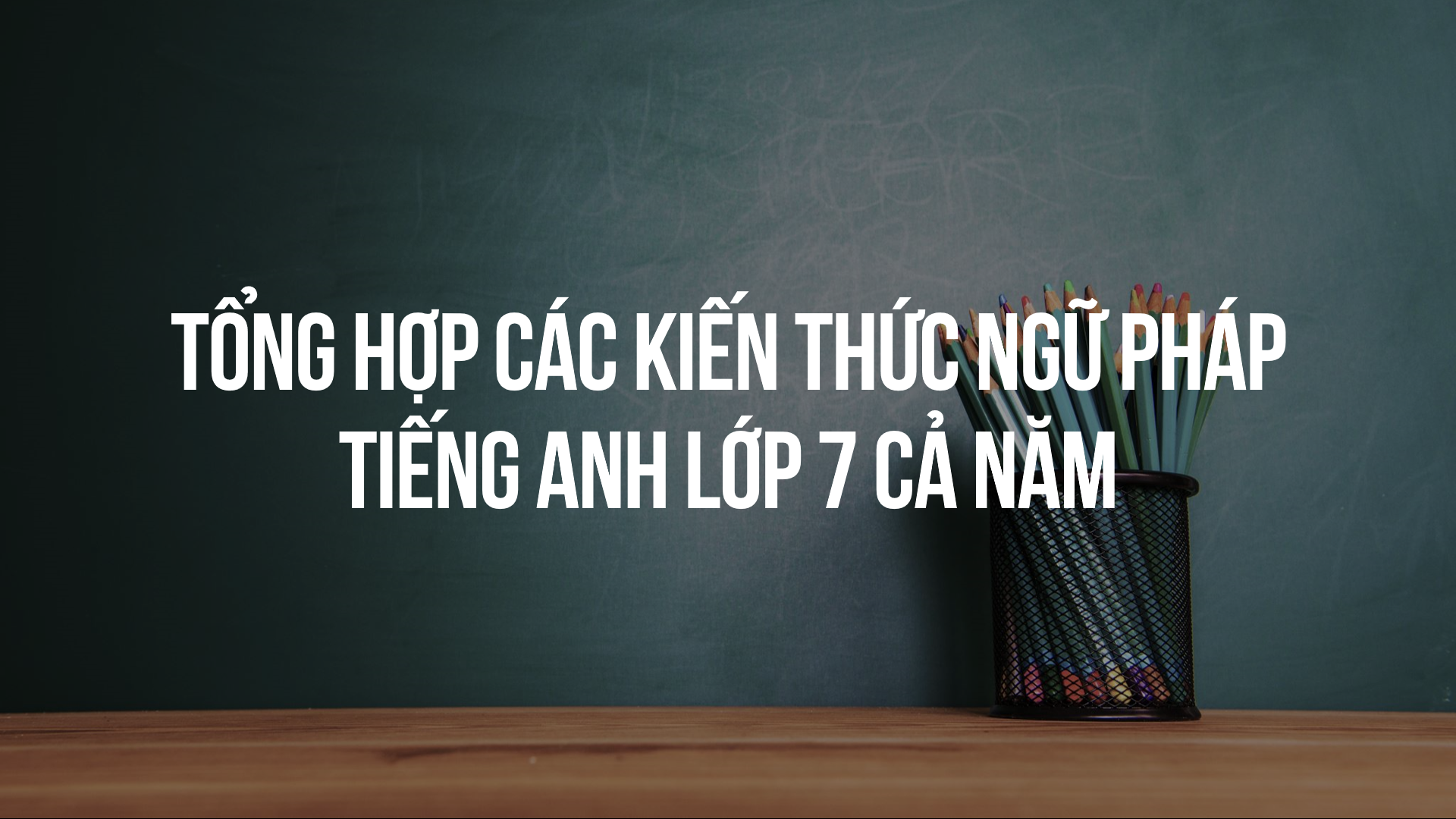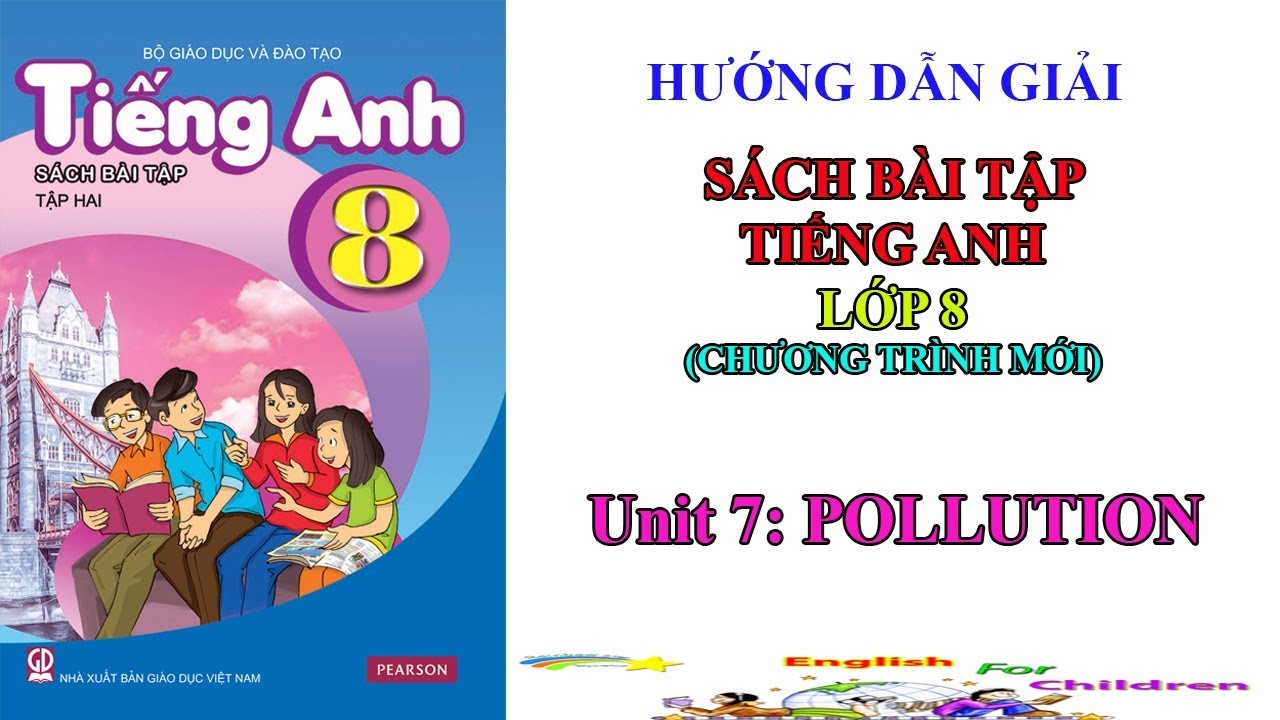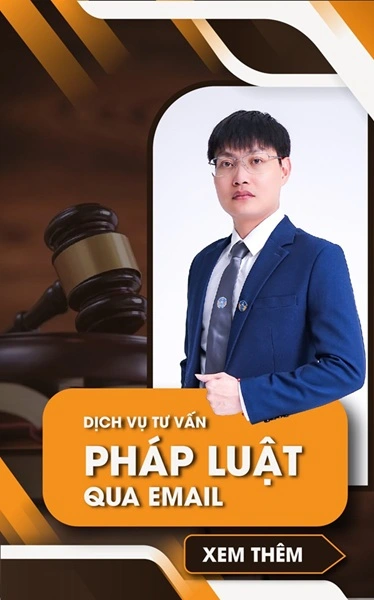Mệnh đề quan hệ trong tiếng Anh thường được bắt đầu bằng các đại từ quan hệ, được dùng để bổ nghĩa cho danh từ đứng trước nó. Tuy nhiên, cách rút gọn mệnh đề quan hệ như thế nào? Cần lưu ý gì khi rút gọn mệnh đề quan hệ?
Mục lục bài viết
- 1 1. Cách rút gọn mệnh đề quan hệ trong tiếng Anh:
- 1.1 1.1. Rút gọn mệnh đề quan hệ bằng cách lược bỏ đại từ:
- 1.2 1.2. Rút gọn mệnh đề quan hệ bằng V-ing:
- 1.3 1.3. Rút gọn mệnh đề quan hệ bằng V-ed/V3:
- 1.4 1.4. Rút gọn mệnh đề quan hệ bằng To-V:
- 1.5 1.5. Rút gọn mệnh đề quan hệ bằng cụm danh từ:
- 1.6 1.6. Rút gọn mệnh đề quan hệ bằng tính từ/cụm tính từ:
- 2 2. Bài tập rút gọn mệnh đề quan hệ trong tiếng Anh:
- 3 3. Những điều cần lưu ý khi rút gọn mệnh đề quan hệ:
1. Cách rút gọn mệnh đề quan hệ trong tiếng Anh:
1.1. Rút gọn mệnh đề quan hệ bằng cách lược bỏ đại từ:
Rút gọn mệnh đề quan hệ là cách giảm từ mệnh đề xuống cụm từ bằng cách lược bỏ đại từ quan hệ (who, whom, which, that…) trong tiếng Anh. Có nhiều cách rút gọn mệnh đề quan hệ khác nhau tùy thuộc vào chức năng của đại từ quan hệ và thể của động từ trong mệnh đề quan hệ.
– Nếu đại từ quan hệ đóng chức năng là tân ngữ trong mệnh đề quan hệ, ta có thể lược bỏ đại từ quan hệ. Ví dụ:
The book that I bought yesterday is very interesting. (Mệnh đề quan hệ)
The book I bought yesterday is very interesting. (Cụm từ)
– Nếu mệnh đề quan hệ có chứa các trạng ngữ chỉ thời gian, nơi chốn, cách thức hay lý do, ta có thể dùng các giới từ (in, on, at, by, for…) kết hợp với cụm phân từ để rút gọn mệnh đề quan hệ. Ví dụ:
This is the place where we first met. (Mệnh đề quan hệ)
This is the place in which we first met. (Mệnh dề quản hệ có giới từ)
This is the place where we first met. (Cụm từ)
1.2. Rút gọn mệnh đề quan hệ bằng V-ing:
Mệnh đề quan hệ là một loại mệnh đề phụ được dùng để bổ sung thông tin cho danh từ hoặc đại từ trước nó. Mệnh đề quan hệ thường bắt đầu bằng các từ như who, which, that, where, when, etc. Tuy nhiên, trong một số trường hợp, chúng ta có thể rút gọn mệnh đề quan hệ bằng cách sử dụng V-ing. Điều này giúp câu ngắn gọn và mạch lạc hơn.
Nếu động từ trong mệnh đề quan hệ ở thể chủ động, ta có thể dùng cụm hiện tại phân từ (V-ing) thay cho mệnh đề quan hệ. Cách làm là lược bỏ đại từ quan hệ và trợ động từ, đưa động từ chính về nguyên mẫu và thêm đuôi -ing.
Ví dụ:
– The man who is standing over there is my teacher. -> The man standing over there is my teacher.
– The man who is standing over there is my uncle. (Mệnh đề quan hệ không rút gọn) → The man standing over there is my uncle. (Mệnh đề quan hệ rút gọn)
1.3. Rút gọn mệnh đề quan hệ bằng V-ed/V3:
Nếu động từ trong mệnh đề quan hệ ở thể bị động, ta có thể dùng cụm quá khứ phân từ (V-ed) thay cho mệnh đề quan hệ. Cách làm là lược bỏ đại từ quan hệ và trợ động từ, giữ nguyên dạng bị động của động từ chính và thêm đuôi -ed (nếu có).
Dưới đây là một số ví dụ khác về cách rút gọn mệnh đề quan hệ bằng V-ed/V3:
– The book which was written by J.K. Rowling is very famous. -> The book written by J.K. Rowling is very famous.
– The students who are taught by Mr. Brown are very smart. -> The students taught by Mr. Brown are very smart.
– The cake which is made of chocolate is delicious. -> The cake made of chocolate is delicious.
– The house which is painted yellow is mine. -> The house painted yellow is mine.
1.4. Rút gọn mệnh đề quan hệ bằng To-V:
Dùng khi danh từ đứng trước có các chữ sau đây bổ nghĩa: the only, the first, the second,… the last, so sánh nhất, mục đích.
Ví dụ Tom is the last person who enters the room = Tom is the last person to enter the room.
John is the youngest person who takes part in the race =>John is the youngest person to take part in the race.
Động từ là HAVE/ HAD
I have a lot of homework that I must do => I have many homework to do.
Đầu câu có HERE (BE), THERE (BE)
There are six letters that have to be written today => There are six letters to be written today.
1.5. Rút gọn mệnh đề quan hệ bằng cụm danh từ:
Cách làm là bỏ which/who và động từ be, chỉ giữ lại danh từ/cụm danh từ sau đó. Ví dụ:
– We visited Hanoi, which is the capital of Vietnam. → We visited Hanoi, the capital of Vietnam.
Trong ví dụ trên, mệnh đề quan hệ which is the capital of Vietnam đã được rút gọn thành cụm danh từ the capital of Vietnam. Câu rút gọn vẫn giữ nguyên ý nghĩa của câu ban đầu, nhưng ngắn gọn và tránh lặp lại.
1.6. Rút gọn mệnh đề quan hệ bằng tính từ/cụm tính từ:
Một cách rút gọn mệnh đề quan hệ trong tiếng Anh bằng tính từ/cụm tính từ là bỏ which/who và be trong mệnh đề quan hệ có dạng which/who + be + tính từ/cụm tính từ.
Ví dụ:
The girl, who is beautiful and intelligent, talks to me.
= The girl, beautiful and intelligent, talks to me.
The book, which is interesting and informative, is on the table.
= The book, interesting and informative, is on the table.
2. Bài tập rút gọn mệnh đề quan hệ trong tiếng Anh:
Bài 1.
1. The man who’s talking to the policeman has just returned home from Paris.
2. The novel which was bought by my sister is very interesting.
3. The students who make noise in class will be punished.
4. Passengers who traveled on this bus bought their tickets in books.
5. Do you see the notice which warns people not to enter the military zone?
6. The stairs which lead to the cellar are rather slippery.
7. We had a river in which we could swim.
8. You are the last person who saw her alive.
9. The pilot was the only one who survived the air crash.
10. He was the second man who was killed in this way.
11. Neil Armstrong was the first man who walked on the moon.
12. Here are some accounts that you must check.
13. I’ve got a bottle of wine but I haven’t got anything that I could open it with.
14. I have some letters that I must write.
15. He simply loves parties. He is always the first who comes and the last who goes.
16. The Queen Elizabeth is the largest ship that has been built on the Clyde.
17. My grandmother, who is old and sick, never goes out of the house.
18. Kuala Lumpur, which is the capital city of Malaysia, is a major trade center in Southeast Asia.
19. Emma Thompson is the most famous actress who will appear on stage here.
20. We have some picture books that children can read.
21. I come from a city that is located in the southern part of the country.
Đáp án
1. The man talking to the policeman has just returned home from Paris.
2. The novel bought by my sister is very interesting.
3. The students making noise in class will be punished.
4. Passengers traveling on this bus bought their tickets in books.
5. Do you see the notice warning people not to enter the military zone?
6. The stairs leading to the cellar are rather slippery.
7. We had a river to swim.
8. You are the last person to see her alive.
9. The pilot was the only one to survive the air crash.
10. He was the second man to be killed in this way.
11. Neil Armstrong was the first man to walk on the moon.
12. Here are some accounts to check.
13. I’ve got a bottle of wine but I haven’t got anything to open it with.
14. I have some letters to write.
15. He simply loves parties. He is always the first to come and the last to go.
16. The Queen Elizabeth is the largest ship to be built on the Clyde.
17. My old and sick grandmother never goes out of the house.
18. Kuala Lumpur, the capital city of Malaysia, is a major trade center in Southeast Asia.
19. Emma Thompson is the most famous actress to appear on stage here.
20. We have some picture books to be read by children.
21. I come from a city located in the southern part of the country.
Bài 2.
1. The man who is standing there is a clown.
2. The envelope which lies on the table has no stamp on it.
3. Benzene, which was discovered by Faraday, became the starting point in the manufacture of many dyes, perfumes, and explosives.
4. My grandmother, who is old and sick, never goes out of the house.
5. The student doesn’t know how to do the exercises which were given by the teacher yesterday.
6. The diagrams which were made by young Faraday were sent to Sir Humphry Davy at the end of 1812.
7. The gentleman who lives next door to me is a well-known orator.
8. All the astronauts who are orbiting the Earth in space capsules are weightless.
9. All students who don’t hand in their papers will fail the exam.
10. I saw many houses that were destroyed by the storm.
11. The street which leads to the school is very wide.
12. The system which is used here is very successful.
13. John, who teaches my son, is my neighbor.
14. Trains which leave from this station take an hour to get to London.
15. The candidates who are sitting for the exam are all from Vietnam.
16. We are driving on the road which was built in 1980.
17. Customers who complain about the service should see the manager.
18. The city which was destroyed during the war has now been rebuilt.
19. My brother, who met you yesterday, works for a big firm.
20. The vegetables which are sold in this shop are grown without chemicals.
Đáp án
1. The man standing there is a clown.
2. The envelope lies on the table and has no stamp on it.
3. Benzene, discovered by Faraday, became the starting point in the manufacture of many dyes, perfumes, and explosives.
4. My grandmother, being old and sick, never goes out of the house.
5. The student doesn’t know how to do the exercise given by the teacher yesterday.
6. The diagrams made by young Faraday were sent to Sir Humphry Davy at the end of 1812.
7. The gentleman living next door to me is a well-known orator.
8. All the astronauts orbiting the Earth in space capsules are weightless.
9. All students not handing in their papers will fail the exam.
10. I saw many houses destroyed by the storm.
11. The street leading to the school is very wide.
12. The system used here is very successful.
13. John, teaching my son, is my neighbor.
14. Trains leaving from this station take an hour to get to London.
15. The candidates sitting for the exam are all from Vietnam.
16. We are driving on the road built in 1980.
17. Customers complaining about the service should see the manager.
18. The city destroyed during the war has now been rebuilt.
19. My brother, meeting you yesterday, works for a big firm.
20. The vegetables sold in this shop are grown without chemicals.
3. Những điều cần lưu ý khi rút gọn mệnh đề quan hệ:
Mệnh đề quan hệ là một loại mệnh đề phụ phát sinh từ một danh từ hoặc đại từ trong mệnh đề chính. Mệnh đề quan hệ có thể được rút gọn bằng cách bỏ đi chủ ngữ hoặc động từ to be của nó, nếu như chúng không cần thiết cho nghĩa của câu. Ví dụ:
– The man who lives next door is very friendly. -> The man living next door is very friendly.
– The book that I bought yesterday is very interesting. -> The book I bought yesterday is very interesting.
– She is the woman who won the lottery. -> She is the woman who won the lottery.
Trong các ví dụ trên, ta có thể rút gọn mệnh đề quan hệ bằng cách bỏ đi who hoặc that, vì chúng chỉ làm chủ ngữ cho động từ to be hoặc một động từ khác. Tuy nhiên, ta không thể rút gọn mệnh đề quan hệ trong ví dụ cuối cùng, vì who làm tân ngữ cho động từ won.
Để rút gọn mệnh đề quan hệ, cần chú ý các điểm sau:
– Chỉ có thể rút gọn mệnh đề quan hệ xác định (defining relative clause), tức là mệnh đề quan hệ không được đặt trong dấu phẩy và là thông tin cần thiết cho danh từ trước nó, không thể rút gọn mệnh đề quan hệ bổ nghĩa (non-defining relative clauses). Mệnh đề quan hệ xác định là mệnh đề cần thiết cho nghĩa của câu, không được ngăn cách bởi dấu phẩy. Mệnh đề quan hệ bổ nghĩa là mệnh đề không cần thiết cho nghĩa của câu, được ngăn cách bởi dấu phẩy. Ví dụ:
+ The girl who is wearing a red dress is my sister. (defining relative clause, có thể rút gọn)
+ The girl, who is wearing a red dress, is my sister. (non-defining relative clause, không thể rút gọn)
– Chỉ có thể rút gọn mệnh đề quan hệ khi đại từ quan hệ làm chủ ngữ cho động từ bị động (passive verb) hoặc làm tân ngữ cho động từ có to be. Nếu đại từ quan hệ làm chủ ngữ cho động từ chủ động (active verb), ta không thể rút gọn mệnh đề quan hệ.
– Khi rút gọn mệnh đề quan hệ bằng V-ed hay V3, ta phải dùng dạng V-ed cho động từ bị động và dạng V3 cho động từ có to be.
– Mệnh đề quan hệ phải có chủ ngữ là danh từ hoặc đại từ chỉ người (who) hoặc vật (which).
– Khi rút gọn mệnh đề quan hệ, ta phải chú ý giữ nguyên thời và thể của động từ trong mệnh đề chính. Ví dụ:
+ He is the man who works hard every day. -> He is the man working hard every day. (giữ nguyên thời hiện tại tiếp diễn)
+ He was the man who worked hard every day. -> He was the man who worked hard every day. (giữ nguyên thời quá khứ đơn)


